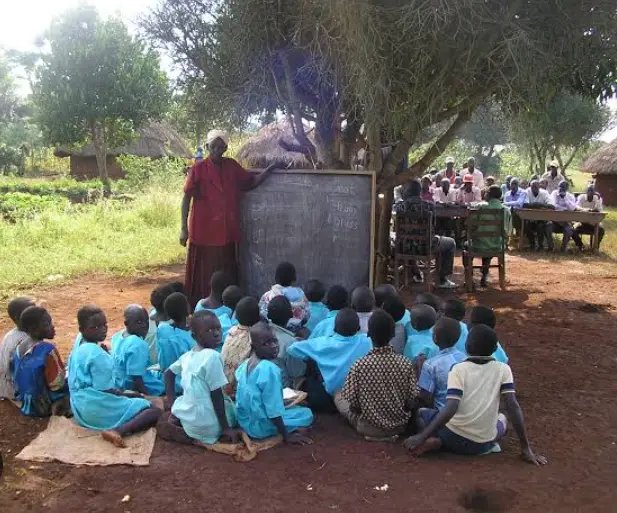
Universal Primary Education (UPE) was initiated in Uganda in 1997 with the goal of providing free primary education for all children aged six to thirteen years. While UPE has made significant strides in expanding access to education, dropout rates remain a challenge in Uganda.
The average primary school dropout rate stands at 45%, but this rate is much higher amongst girls in the whole country.
According to reports of 2017 and 2018, it is estimated that 8% representing 80,000 learners studying in UPE schools across the country, drop out of school every year. As such, many of them do not make it to the upper primary.
Preliminary findings indicate that, many families in Uganda live in poverty and children from these families often face hurdles to education. This includes the cost of school supplies, uniforms, and transport, among others, which can be extortionate for poor families. As a result, parents may prioritize their children’s labor contributions over education hence leading to high dropout rates.
Shallon Ahabwe said that, she dropped out of school in Primary Six because her parents could not afford to buy scholastic materials, hence they opted for her to drop out to pave way for her younger siblings to continue with their education.
“I dropped out of school because my parents could not afford to buy for me uniform, books and other scholastic materials. So I decided to help my parents in tilling the land so that my younger siblings can continue with their education. Later, I had to leave home and move to Kampala to work as a maid so as to help my family with their expenses,” Ahabwe said.
In rural areas, many children walk long distances to reach the nearest school. Poor roads and lack of transport make it difficult for children to attend school regularly leading to high dropout rates especially among girls.
Despite the expansion of primary education, the quality of education in some schools has remained low. The classrooms are overcrowded, poorly trained teachers and inadequate learning materials also lead to a lack of interest in education and ultimately contribute to dropout rates.
According to Filbert Baguma, the General Secretary of Uganda National Teachers Union (UNATU), teenage pregnancy forces young girls to drop out of school due to stigma and challenges in balancing education with parenting responsibilities.

He said that, some of the UPE dropout cases are attributed to the weak government enforcement, and contradictory policies.
“There is weak enforcement because government put a UPE program but children are loitering everywhere during school time and nobody is bothered. So that makes it very difficult,” Baguma said.
“There are also contradicting policies. Government said that at primary school level, it is automatic promotion. But remember when you reach P.7, you cannot join USE unless you have scored up to 28 aggregates. So, if you have allowed someone to just walk and ride through the school system and then you reach somewhere and say that there is a certain score to let you proceed, obviously, it pushes some of the pupils out of the education system,” Baguma added.
He further said that, a number of children in Uganda engage in labor to support their families. This include agricultural work, domestic labor or street vending. The need to contribute to the family’s income leads to children dropping out of school.
Some scholars have argued that, cultural practices and early marriages especially among girls, has led to high dropout rates as some cultures have a primitive and negative perspective towards education.
Health challenges such as illness, malnutrition and lack of access to healthcare has contributed to school dropout rates. Children with health issues may miss school frequently, impacting their ability to keep up with their studies and hence dropping out of school.
Research has it that some marginalized groups such as children with disabilities or those from minority ethnic groups may face discrimination and social exclusion impacting their ability to stay in school.
Much as the statistics indicate that a big number of students drop out of school at the primary level, findings show that there is a case of inflated numbers of P.1 and P.2 by Headteachers in a bid to get capitation grants from the government.
Most rural UPE schools in Uganda have nursery sections, where by the Headteachers register children of baby, middle and top classes as P.1 and P.2 pupils, yet they are not supposed to benefit from capitation grants. Since these pupils don’t exist, it later comes out as pupils who dropped out of school in Lower Primary.
Addressing these challenges requires a multi-faceted approach including improving school infrastructure, addressing poverty, promoting gender equality, enhancing teacher training and engaging with communities to support and prioritize education. Additionally, targeted programs and policies focused on supporting at-risk children and families can help mitigate the factors contributing to dropout rates in Uganda.














